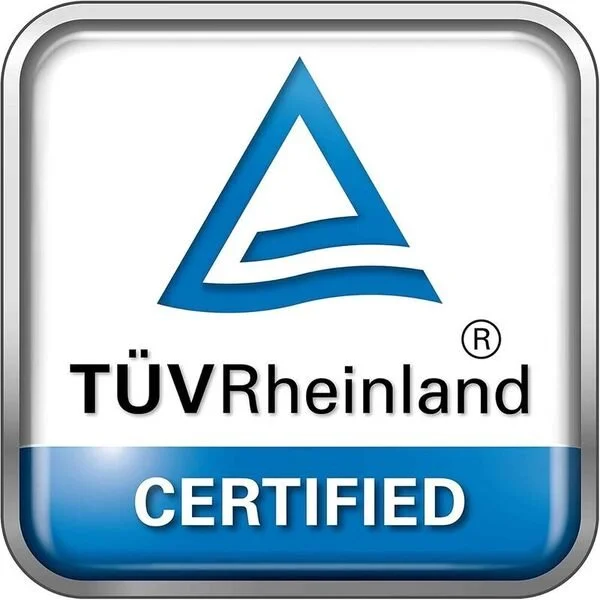Certification as Strategy: Turning Safety and IP into a Moat
TUV Rheinland provides robot safety certification and is one of several global companies offering testing and certification services.
Credit: TUV Rheinland
Why compliance detail belongs in your value proposition, not the appendix
Buyers rarely choose a robot vendor on charm; they choose the organisation that reduces operational and regulatory risk while delivering acceptable cost and speed. That’s why certification work—often treated as back-office hygiene—has become a front-of-house differentiator. A vendor who designs units, documentation and updates to align with safety norms by default is easier to buy, easier to insure and harder to dislodge.
The keystone is still ISO 10218—Part 1 for the robot, Part 2 for integration. It anchors hazard assessment, safeguarding and validation for industrial robot applications. Where humans and robots share space, ISO/TS 15066 adds collaborative guidance, including the four recognised collaborative modes. Referencing these standards in proposals is not box-ticking; it frames the whole lifecycle, from commissioning to change control and decommissioning, in vocabulary the customer’s EHS and compliance teams already use.
Regional regimes reinforce the signal. In Europe, the Machinery Regulation (EU) 2023/1230 replaced the Machinery Directive, modernising health and safety requirements for design and construction. If your roadmap includes AI features, the EU AI Act’s phased obligations will sit alongside machine safety—especially for “high-risk” use cases embedded in regulated products. Buyers don’t expect suppliers to be lawyers; they expect them to show a map from product features to compliance pathways.
Safety is also where IP and brand intersect. Publishing safety cases (with redactions where necessary), maintaining auditable change logs, and offering pre-certified configurations turn compliance into a reusable asset. OSHA and NIOSH materials help normalise terms with the customer’s safety function—right down to mundane but important details such as how the EOAT is treated as part of the system. When every stakeholder shares language, reviews shrink and approvals stick.
GTM thinking benefits from this discipline. Rather than tucking conformity into annexes, leading vendors make it part of the narrative: “Here’s the standard we align to, here’s the evidence, here’s how updates are validated, and here’s how we handle exceptions.” That invites sharper scrutiny but pays back in shorter procurement cycles and fewer late-stage surprises. It also justifies premium service tiers around validation support and change management—valuable recurring revenue that competitors struggle to fake.
In competitive bids, certification posture is a tie-breaker. Two vendors may quote similar price and cycle times; the one with traceable, standards-aligned governance and documented test methods wins. That is a moat: not a patent alone, but a repeatable capability to ship safe change, on time, with proof.
